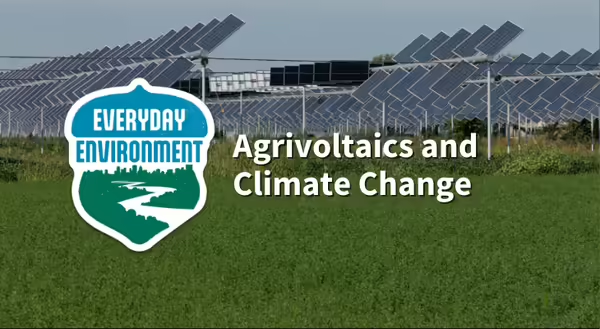
One of the most exciting projects Illinois Extension is involved in is the SCAPES project — Sustainably Co-Locating Agricultural and Photovoltaic Energy Systems. This initiative, funded by NIFA, involves a collaboration between multiple institutions, including the University of Illinois, University of Arizona, Colorado State University, Auburn University, and the National Renewable Energy Laboratory. The project's goal is to explore how agricultural lands can simultaneously produce food and solar energy, a concept known as agrivoltaics.
The Importance of Prime Farmland
Illinois is renowned for having some of the best soil in the world, particularly for crop production. This isn't just a local boast; it's a fact recognized globally. Prime farmland is scarce, with the Corn Belt in the U.S., California’s Central Valley, parts of Argentina, Ukraine, and select regions in China and Northern Europe being among the few areas ideally suited for crop production. As an agronomist, it's disheartening to see this valuable land being used for solar panels instead of crops.
However, there's a reason why cropland is often chosen for solar installations. Cropland is flat, unshaded, and vegetated. These conditions that are ideal for solar energy production. While deserts might seem like an obvious alternative, their distance from urban areas and high temperatures, which reduce solar panel efficiency, make them less suitable.
The Future of Agrivoltaics
The SCAPES project is exploring the potential of agrivoltaics — simultaneous food and energy production. In Illinois, we're researching the impact of partial shade from solar panels on row crops. Early results from the University of Arizona suggest that tomato production can actually increase under solar panels due to reduced heat and evaporation, which is crucial in arid regions.
Our research extends to multiple locations, including Arizona, Colorado, and the University of Illinois Research Farm. We're also working on Solar Farm 2.0, a 54-acre solar installation on former research plots at the university. This project includes pollinator plantings as well as crop production research plots and will provide valuable data on the benefits and challenges of agrivoltaics.
Challenges and Opportunities in Agrivoltaics
Agrivoltaics can look different depending on the region and production system. For example, in New England, solar farms are often grazed by sheep, reducing vegetation management costs for solar developers. These developers are keen to pass off vegetation control to others, making agrivoltaics an attractive option.
Other innovative ideas include translucent solar panels for greenhouse roofs, which convert some sunlight into energy while allowing the rest to pass through. This dual-use approach could be especially beneficial in regions where too much sunlight can harm crops.
Elements of Success for Agrivoltaics
The success of agrivoltaic systems depends on several factors: climate, soil, solar technology, crop selection, and the collaboration between developers, farmers, and communities. Surprisingly, little research has been done on the impact of partial shade on row crops, which is a gap our project aims to fill. We're also exploring how to optimize solar panel design to maximize agricultural benefits.
One big question remains: Can the combined yield of electricity and crops be better than either one alone? And can this approach conserve water, diversify farm profitability, and be adopted by farmers across different environments? This is the work we are doing as SCAPES.
Engaging the Next Generation
As part of our outreach efforts, we're developing a farming simulation game that includes agrivoltaics called My Agrivoltaic Farm. This game will help players understand the interactions between solar panels and crops and is available for download and in children's museums across the Midwest.
The SCAPES project represents a new frontier in which we harness both electrical energy and agronomic crops from a shared landscape. As we continue our research, I hope to provide valuable insights into whether agrivoltaics can be a profitable and sustainable option for farmers.
Thank you for reading!
Everyday Environment is a series of blogs, podcasts, webinars and videos on exploring the intricate web of connections that tie us to the natural world. Check out the podcast episode on this topic to hear more about Agrivoltaics from Dennis Bowman.
Subscribe to Everyday Environment Newsletter More about Everyday Environment